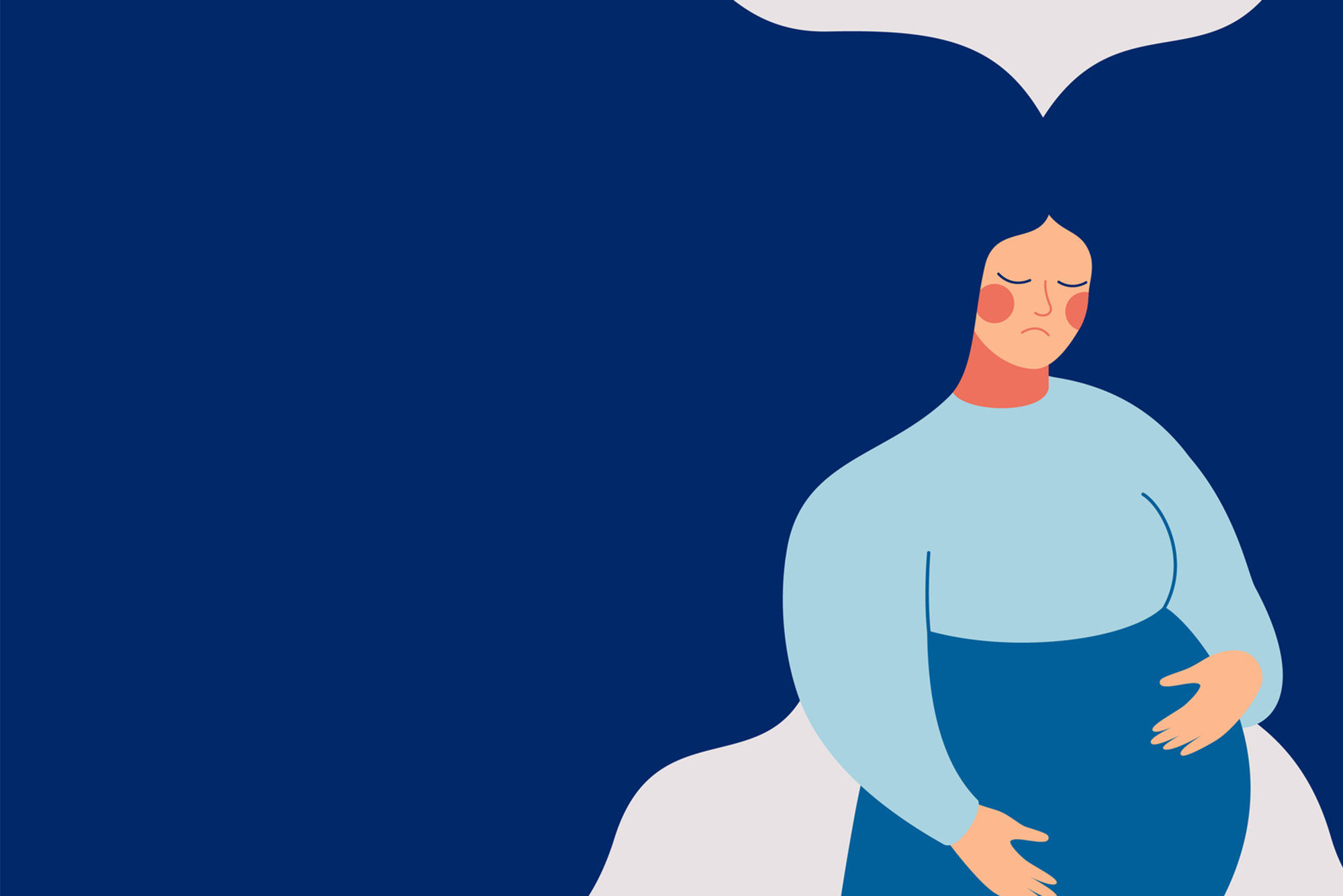State Laws Banning Abortion Linked to Increases in Mental Health Issues
Researchers found that state-level restrictions and bans on abortion care led to higher levels of mental distress in the state’s population

States that implement abortion bans see an upward tick in mental distress relative to states that don’t restrict abortion, according to new research. Photo via iStock/Mary Long
State Laws Banning Abortion Linked to Increases in Mental Health Issues
Researchers found that state-level restrictions and bans on abortion care led to higher levels of mental distress in the state’s population
Since the US Supreme Court overturned the national right to abortion in June 2022, journalists and abortion advocates have spotlighted the decision’s many repercussions, particularly for people living in states that subsequently banned the procedure. There have been cases of women whose lives were at risk, yet were unable to receive timely care, reports of doctors fearing that providing lifesaving care could result in legal prosecution, and stories of the tens of thousands of people traveling to other states to get abortions or abortion medication, adding time and costs to an already burdensome process.
All of these changes result in an obvious physical toll for people, as well as an economic burden for those who travel for care or stay pregnant. But there is also a notable impact on mental health that has largely gone under the radar, according to a new study coauthored by a Boston University researcher. In a paper published in Science Advances, information systems expert Gordon Burtch and his colleagues found that there is a significant increase in mental distress after state-level abortion restrictions are enacted.

Photo courtesy of Burtch
Their paper says that abortion restrictions have had “broad negative implications for the mental health of people living in the US, particularly those of lower education and personal wealth,” which is likely due to the difficulty in paying for travel out of state or the costs associated with pregnancy. Advocates have pointed out for decades that abortion restrictions are felt disproportionately by people of color and those who are in poverty.
“The mental stress that comes with these policy changes isn’t just due to the policy change itself, but also the ambiguity around the change,” says Burtch, a BU Questrom School of Business Allen and Kelli Questrom Professor in Information Systems and a dean’s research scholar. Bans and restrictions have led to legal gray areas around what doctors are allowed to do under the law, which Burtch says leads to widespread stress and worry for patients, clinicians, and family members. He and his coauthors, Michaela R. Anderson of the University of Pennsylvania and Brad N. Greenwood of George Mason University’s Costello School of Business, used data collected between July 2021 and June 2023 by the nationwide Household Pulse Survey to evaluate how bans and restrictions on abortion access have impacted mental health in broad swaths of the population.
The Brink spoke with Burtch about the findings, the implications of the study, and how the Supreme Court’s recent decision to dismiss a case on Idaho’s attempt to ban emergency abortion care will impact that state’s collective mental health.
Q&A
With Gordon Burtch
The Brink: What motivated the study?
Burtch: Shortly after Roe v. Wade got overturned, my coauthor Brad and I were talking about all kinds of problems that will happen from this decision and how so many things will be disrupted. One of the first changes was likely to be stress. I was aware of the Household Pulse Survey that had been launched by the Census Bureau during the COVID-19 pandemic, and that it also has questions to capture mental health and indicators of distress. We immediately saw patterns in the data, and we brought in Michaela, who helped us understand these results from the clinical perspective. I think this is giving us a baseline about how extensive the consequences are for people broadly.
The Brink: Why is mental health an important measure in regards to abortion restrictions?
Burtch: Obviously, women of childbearing age are most likely to be affected. But these policy changes extend to a much broader population than we typically realize, like family members and caregivers. This could create stress for the entire family, for anybody that’s connected to an individual that is in a position of needing an abortion. There’s also a lot of people worried about what could come next. After Roe was overturned, that led to questions about same-sex marriage rights and other rights that could be impacted by the courts. We have a lot of reasons to expect that these national changes will have a broad influence, beyond the stress that comes with contemplating abortion and going through an abortion.
The Brink: How did you figure out that spikes in mental distress are specifically related to abortion bans, and not something else?
Burtch: We essentially look at the change over time, from before to after policy change. In this case, the institution of an abortion restriction in a given location. We compare those differences in states with abortion restrictions to states where no policy change happened. This means we’re implicitly controlling for natural sources of variation, like seasonality or the economy. In the paper, we show that nothing is systematically different in states that have not adopted bans; in the ones that do adopt abortion bans, we see an upward tick [in mental distress] relative to ones that didn’t make any change. This is all happening at the population level, and the survey collected over a million responses for every question and then weighted the results to be demographically representative.
The Brink: Why are there disparities among people with lower incomes and education?
Burtch: The most plausible explanation is: When an abortion restriction is imposed in a particular state, how do people deal with that? If someone can’t access an abortion and ends up having the child, there’s an economic cost to that which is much harder for people with less money to bear, and they’ll likely experience more stress about this possibility. If the other option requires travel costs, taking time off a job, paying for childcare, and paying for the procedure or medication, that’s a lot of additional costs too. The fact that mental health effects appear larger among people with lesser education is probably correlated to lesser wealth, so that’s probably a single factor—that people of lower socioeconomic status have more difficulty absorbing new costs that come with dealing with an abortion.
The Brink: Do you think the recent court case about the abortion restriction in Idaho will cause more stress?
Burtch: It’s important to note that a lot of the mental stress that comes with these policy changes isn’t just due to the policy change itself, but also the ambiguity around the change. In the recent example in Idaho, where the state challenged the federal government’s rule on providing emergency [abortion] medical care, the Supreme Court didn’t rule in favor of the state—they basically threw it out and said that this challenge shouldn’t have made it to the Supreme Court. So, they didn’t resolve it. As of now, doctors need to keep providing emergency [abortion] care until they say otherwise. But it’s still a legal gray area that impacts medical providers and patients. So long as this remains unresolved, and we don’t have clarity around what’s allowed in different places, that’s linked to so much stress. I hope this paper reaches lawmakers and medical providers, so they can understand that these policies are creating lots of stress for lots of different people and they should be empathetic to that.
This interview was edited and condensed for clarity and length.

Comments & Discussion
Boston University moderates comments to facilitate an informed, substantive, civil conversation. Abusive, profane, self-promotional, misleading, incoherent or off-topic comments will be rejected. Moderators are staffed during regular business hours (EST) and can only accept comments written in English. Statistics or facts must include a citation or a link to the citation.